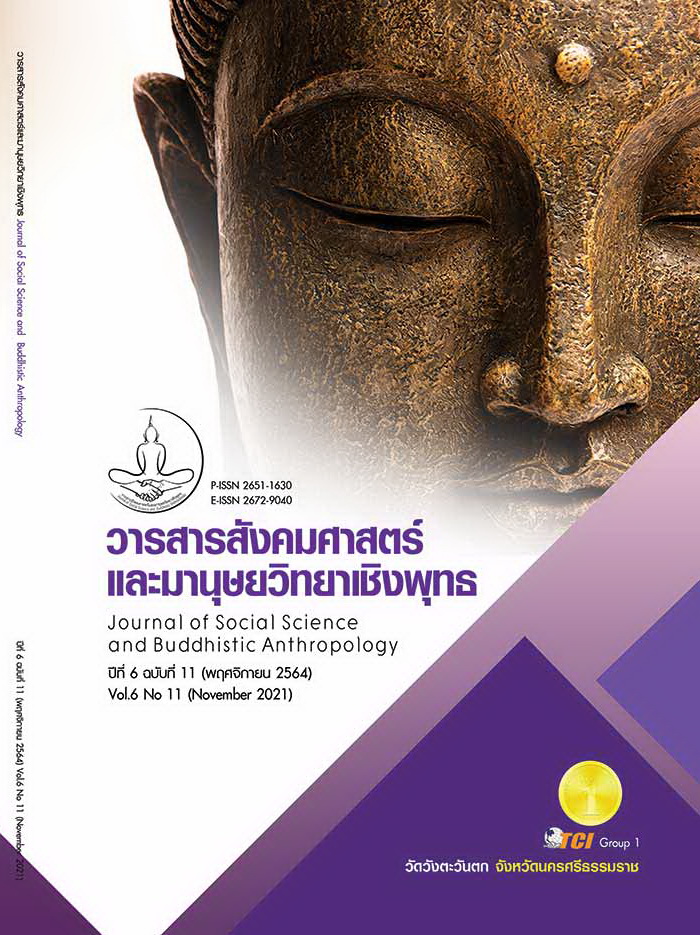DEVELOPMENT OF SUBSTANCE ABUSE PREVENTION MODEL FOR ADOLESCENTS WITH PARTICIPATION OF NETWORK PARTNERS IN THE 8th REGIONAL HEALTH
Keywords:
Substance Abuse Prevention Model, Adolescent, Networking PartnershipAbstract
The objectives of this research article were to study the situations, develop and evaluate the model for preventing adolescent substance abuse with an association of network partners in the 8th regional health. This research and development study was divided into three phases. First Phase: examine the situation of adolescent substance abuse prevention. The samples consisted of 216 adolescents and 15 members from network partnerships. Second Phase: develop the model by using activities to promote knowledge and skill on substance abuse prevention. Third Phase: evaluate the model using mean, percentage, standard deviation, Repeated ANOVA, and MANOVA. Data were collected using questionnaires constructed by the researcher and the experts approved with reliability score of 0.77, and IOC reviewed by the experts with a score of 0.70. The results showed that the adolescents’ knowledge, decision making skills, problem - solving skills, advanced refusal skills, and self - esteem were at NOT SURE level. Substance abuse prevention behaviors were at the MEDIUM level. The substance abuse prevention model for adolescents with participation of networking partnership consisted of three factors as follows: 1) principle and concept of McKinsey’s 7S Framework; 7S-NIP, 2) using three activity packages, and 3) the networking partnership planning for eliminating the places for an unlawful purpose, organizing exchanging experiences forum and the stage for master youth contest. After the 6th and 8th week of experiment, adolescents' substance abuse knowledge scores were higher. The adolescents’ decision - making skills, problem - solving skills, advanced refusal skills, and self - esteem scores were high and statistically significant at the 0.05 level. According to McKinsey’s 7S Framework; 7S-NIP, the substance abuse prevention model will be successful when adolescents' self-esteem should be developed and the true association of networking partnership.
References
ชานนท์ มณีศรี. (2558). ผลของโปรแกรมการสร้างเสริมทักษะชีวิตต่อการป้องกันการเสพสารเสพติดในนักเรียนมัธยมศึกษาตอนต้น อำเภอเมือง จังหวัดปัตตานี. ใน วิทยานิพนธ์สาธารณสุขศาสตรมหาบัณฑิต สาขาสาธารณสุขศาสตร์. มหาวิทยาลัยราชภัฏสงขลา.
บุรฉัตร จันทร์แดง และคณะ. (2560). ปัจจัยที่มีผลต่อพฤติกรรมเสี่ยงต่อยาเสพติดของนักเรียนชั้นมัธยมศึกษาในเขตพื้นที่ตะเข็บชนแดนลุ่มน้ำโขง. วารสารมหาวิทยาลัยราชภัฎยะลา, 14(3), 425-432.
พรสุข หุ่นนิรันดร์ และคณะ. (2562). หนังสือเรียนรายวิชาพื้นฐานสุขศึกษาชั้นมัธยมศึกษาปีที่ 1 (พิมพ์ครั้งที่ 16). กรุงเทพมหานคร: สำนักพิมพ์อักษรเจริญทัศน์.
วรายุทธ จีนงาม (เครือข่ายผู้ปฏิบัติ). (15 กรกฎาคม 2563). ปัจจัยที่ส่งผลต่อการใช้สารเสพติดของวัยรุ่น ปัจจัยภายในชุมชน ปัจจัยภายนอกชุมชนและแนวทางการป้องกันการใช้สารเสพติด. (อนัญญา ขุนศรี, ผู้สัมภาษณ์)
สรวิชญ์ เหล่าดรุณ. (2561). ปัจจัยที่มีอิทธิพลต่อพฤติกรรมป้องกันการใช้สารเสพติดในนักเรียนโรงเรียนขยายโอกาส. ใน วิทยานิพนธ์ปริญญามหาบัณฑิต สาขาวิชาการพยาบาลสุขภาพจิตและจิตเวช. มหาวิทยาลัยบูรพา.
สำนักงานเขตสุขภาพที่ 8. (2563). รายงานผลการดำเนินงานเขตสุขภาพที่ 8 สาขายาเสพติด ปี 2563. เรียกใช้เมื่อ 10 เมษายน 2564 จาก https://r8way.moph.go.th/r8way /view_publicize.php?id=1273
สำนักงานคณะกรรมการป้องกันและปราบปรามยาเสพติด. (2562). แผนปฏิบัติการป้องกันและแก้ไขปัญหายาเสพติดปี 2561. กรุงเทพมหานคร: สำนักยุทธศาสตร์ สำนักงานคณะกรรมการป้องกันและปราบปรามยาเสพติด.
สุกานดา จันทวารีย์ และสุทธิพันธ์ อรัญญวาส. (2560). กลยุทธ์การเสริมสร้างภูมิคุ้มกันและป้องกันยาเสพติดในสถานศึกษา. วารสารวิชาการธรรมทัศน์, 17 (3), 390–401.
สุภาพร ชินสมพล และคณะ. (2562). การพัฒนาโปรแกรมให้ความรู้เรื่องยาเสพติดของเยาวชนแกนนำเครือข่ายป้องกันปัญหายาเสพติด. ใน เอกสารการประชุมวิชาการระดับชาติ วิทยาลัยนครราชสีมา ครั้งที่ 6 ประจำปี พ.ศ. 2562 “สังคมผู้สูงวัย : โอกาสและความท้าทายของอุดมศึกษา”. วิทยาลัยนครราชสีมา.
สุวพันธ์ คะโยธา และวุธิพงศ์ ภักดีกุล. (2561). ปัจจัยเสี่ยงต่อการใช้สารเสพติดและปัจจัยที่มีผลต่อการปฏิบัติตนป้องกันการใช้สารเสพติดของเยาวชนในโรงเรียนมัธยมศึกษาเขตเทศบาล สกลนคร. วารสารโรงพยาบาลสกลนคร, 21(3), 84-95.
เอกรัตน์ หามนตรี. (2561). ความสำเร็จของชุมชนในการป้องกันและแก้ไขปัญหาเยาวชนที่มีพฤติกรรมเสี่ยงต่อการติดยาเสพติดในจังหวัดอ่างทอง. วารสารมหาจุฬานาครทรรศน์, 5(2), 434-451.
Anderson, L. W. & Krathwohl, D. R. (2001). A taxonomy for learning, teaching, and assessing: A revision of Bloom’s taxonomy of educational objectives. New York: Addison Wesley Longman.
Best, J. W. (1977). Research in Education (3rd ed). New Jersey: Prentice hall Inc.
Daniel, W. W. (2010). Biostatics: Basic Concepts and Methodology for the Health. New York: John Wiley & Sons.
McKinsey. (2008). McKinsey 7S Framework. Retrieved August 3 , 2020, from http://www. valuebasedmanagement.net/ methods_7S.html
United Nations Office of Drugs and Crime. (2020). World drug report 2019. Geneva: UNODC.








